After living in Tuscany for eight years—and writing about it weekly—I still treasure my daily meals, as they provide me with a window onto my adopted culture. Food plays a vital part in making the Italian lifestyle special, but I’ve noticed there are key things visitors sometimes misunderstand when they travel to Tuscany. And those minor (and easy to fix) misunderstandings can make eating in Tuscany less fun—and even less delicious, because it can mean missing out on some of the best parts of eating in Italy. In that spirit, here’s an insider’s list of Tuscan food tips.
Pasta can be a minefield
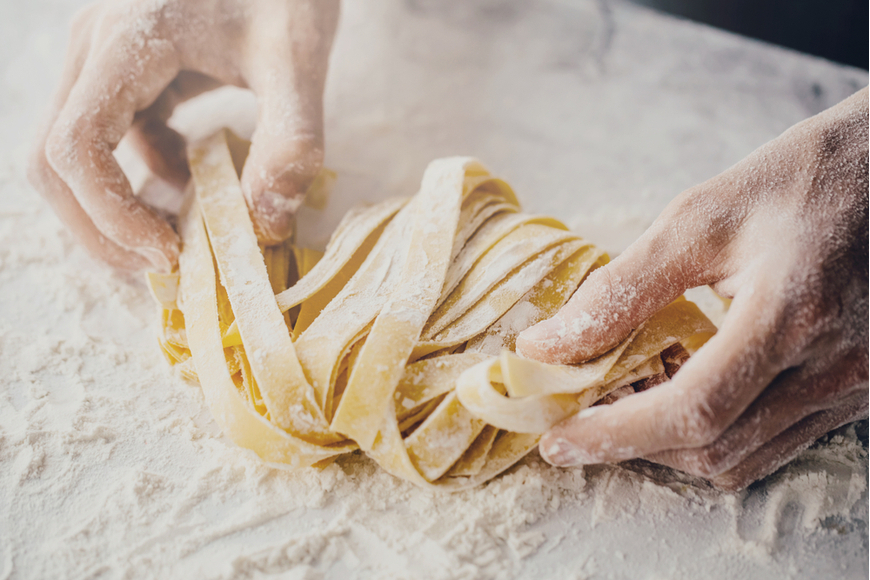
Pasta is central to the Italian identity—so much so that almost every village has its own variety—and passions run high. After all, this is a country that keeps a gold cast of the exact measure of the tagliatella noodle under lock and key in Bologna’s city offices.
I knew that Italians want pasta to be prepared al dente (firm when bitten) but I was surprised by how far Italians push the firm part. Theybelieve overcooked pasta is bad for the digestion, and many Italians won’t eat pastaabroad because it’s hard to find places that cook it properly.
Pasta is served immediately after it’s cooked so that you can eat it hot, which means that people at a table may be served at slightly different times. Italians start eating immediately when served rather than waiting for everyone at the table to receive their food.
Parmesan cheese is only served on certain types of pasta, and never on dishes that include seafood as the cheese flavor might overwhelm the fish.
Marie Kondo your pizza
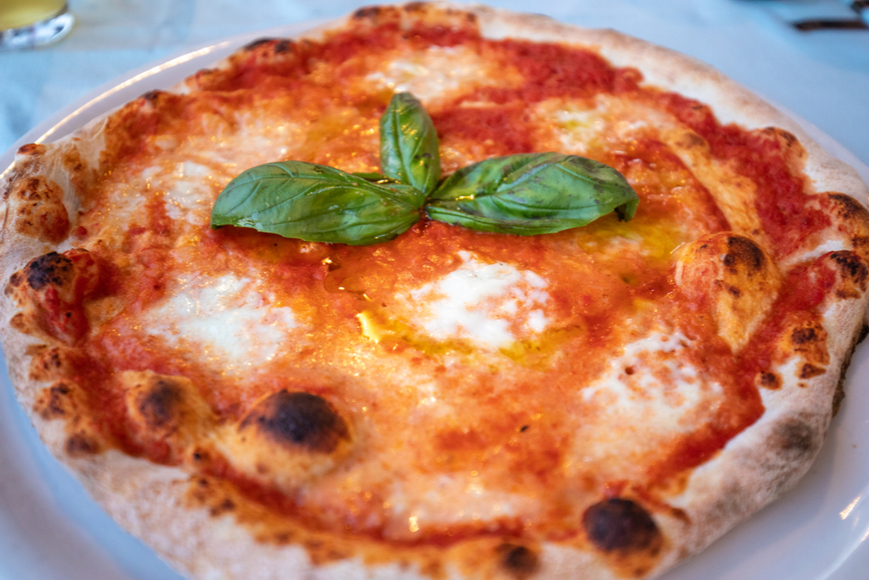
Less is more when it comes to pizza. I asked a waiter friend the biggest thing he wishes he could say to non-Italian customers. His answer: People miss the point when they try to pile on too many toppings on a pizza. The best pizza is the simplest; that simplicity allows the individual ingredients to shine through. A pizza margherita, for instance, shows off what happens when the right flour, water, and yeast are married to a wonderful tomato sauce and mozzarella.
In Italy, pizzas are ordered one per person and served whole (expect to cut it yourself).
Coffee rules
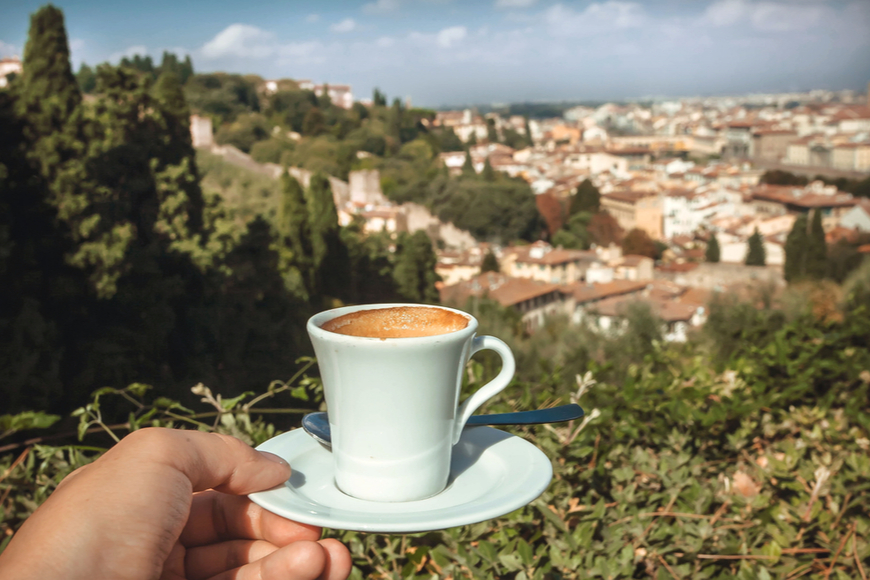
In all senses of that word.
The first thing to know is that what you drink is a “caffè” and where you do it is called a bar. Italians tend to have several cups of coffee a day, and usually stand at the bar and drink them quickly. (At some bars there is a higher price if you sit at a table.) A caffè is single shot of espresso. Coffee is served a bit cooler than many people expect because the Italians believe that things that are too hot, or too cold, like iced drinks, are bad for the digestion. And locals would never drink a cappuccino after noon (because too much milk after lunch is … bad for the digestion.)
I learned early on that a way around the afternoon cappuccino rule while keeping your street credibility is to order a caffè macchiato, which is an espresso with a small dab of milk either caldo (hot and steamed) or freddo (cold).
For a more adventurous coffee experience, try a caffè corretto (literally a “corrected coffee”), which is an espresso with a shot of alcohol—most commonly grappa, sambuca, or brandy. In the town I live in, this is a frequent early-morning treat for the wild boar hunters before they head out to the fields with their loaded guns.
Take your time
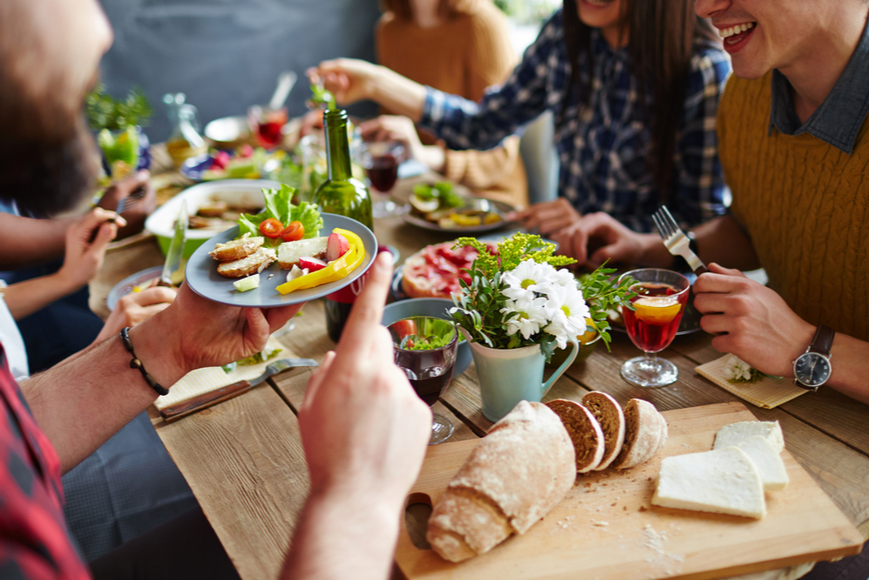
In most of Tuscany, outside of tourist centers, restaurants aren’t trying to squeeze more than one seating into a lunch or dinner window. This means that meals are leisurely breaks that are usually multi-course. Trying to rush through this type of meal is not only largely impossible but will also likely earn you a puzzled and concerned look from the server, and probably the chef as well.
Lunch is traditionally the biggest meal of the day, and on weekends or in more traditional restaurants, will include an antipasti course of bruschetta or sliced meats like prosciutto, fennel salami, and local cheeses; followed by pasta (the primi course); then meats (the secondi). Meats usually come solo, and vegetables and potatoes are ordered separately as contorni, but are meant to be shared by the table. Dessert, coffee, and perhaps a digestive, like a grappa, follow.
Sunday lunch is the highlight of the week for many Italians and well worth indulging in. Seeing large families gathering for a lunch that lingers far into the afternoon is a special treat.
How to avoid bad luck (and bad sex)
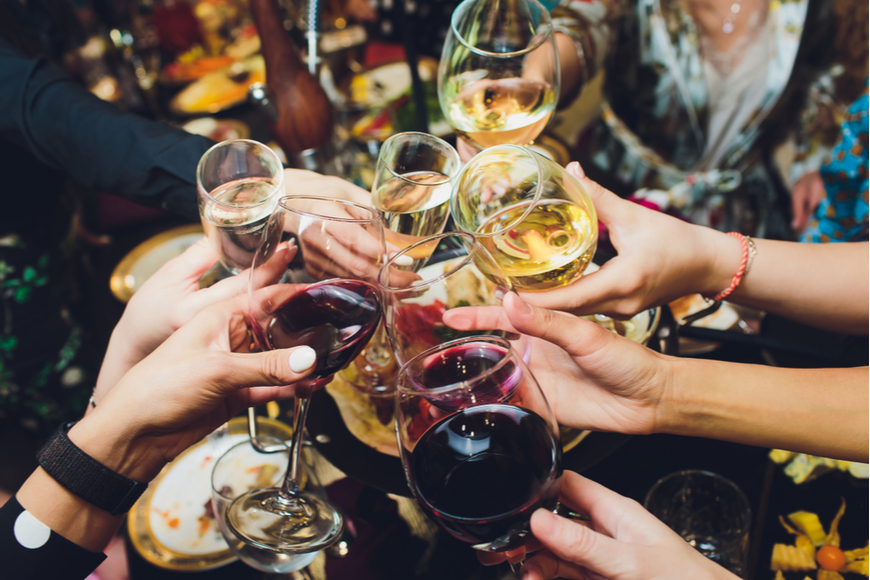
Part of the joy of opening a bottle of wine is toasting, and unless you want bad luck to come your way, it is important to know a few customs. The most common toasts are “Salute” (to your health) or “cin cin.” Always look into the eyes of the person you are toasting (I’ve heard that you are doomed to years of bad sex if you don’t), never cross arms to reach another’s glass, always take a sip before putting your glass down, and no toasting with water … or more bad luck.
About that bread
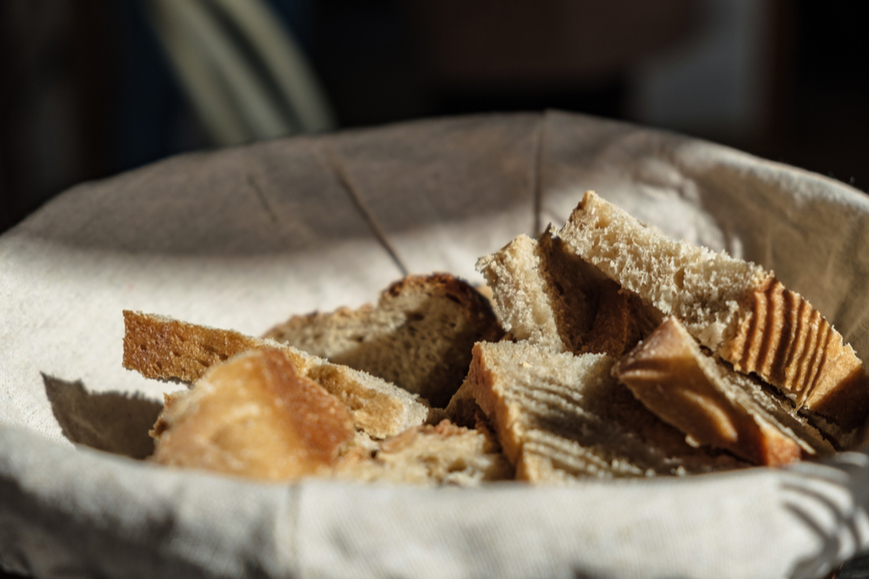
Anyone who has visited Tuscany knows the moment. The breadbasket arrives and you open it with great anticipation only to find a pile of dry, sliced unsalted white bread. How can this be in a land of delicious food?
Until fairly recently, Tuscany was very poor. A lot of families were lucky to scrape together enough flour to bake bread once a week, and they wanted it to last until the following week. If bread lacked salt, it didn’t attract as much moisture and so lasted longer. And so saltless bread became the tradition.
When the bread is delivered to the table, ignore it. It is meant to be eaten later in the meal and with other food. Asking for olive oil and salt to have with the bread at the start of the meal is something only tourists do.
Tuscan bread shines in the antipasti course, like bruschetta or crostini, which are often served with raw tomatoes, olive oil, and salt, or the classic Tuscan crostini neri made with chicken livers sautéed in wine.
Bread can be used so soak up any extra sauce from the pasta course, but only in informal settings. (It’s called fare la scarpetta, or make the slipper, for reasons no one seems totally clear on) or eaten with the meat course.
When to eat, and when you can’t
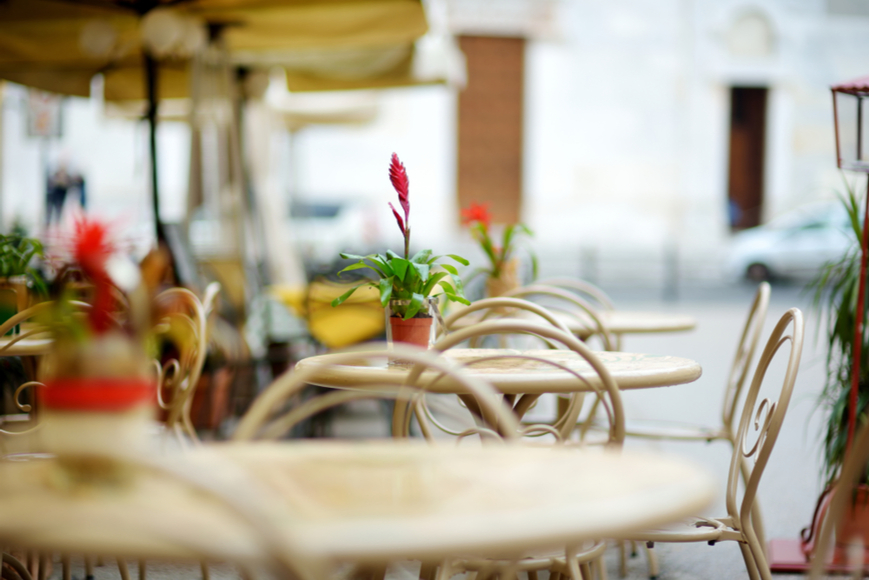
Most restaurants open from 12:30 to about 2 p.m., close, and then reopen for dinner at 7:30. If you arrive promptly at 12:30 or 7:30 you are likely to be one of the few people there. The lunch crowd doesn’t really arrive until after 1 p.m., and restaurants don’t fill up until after 8:15 or 8:30 in the evenings. I’ve found that most Italians like to be in a crowd—it makes life more interesting and lively to see and be seen—so the idea of eating early to avoid a rush is not part of the Italian mentality.
Eat where the locals do
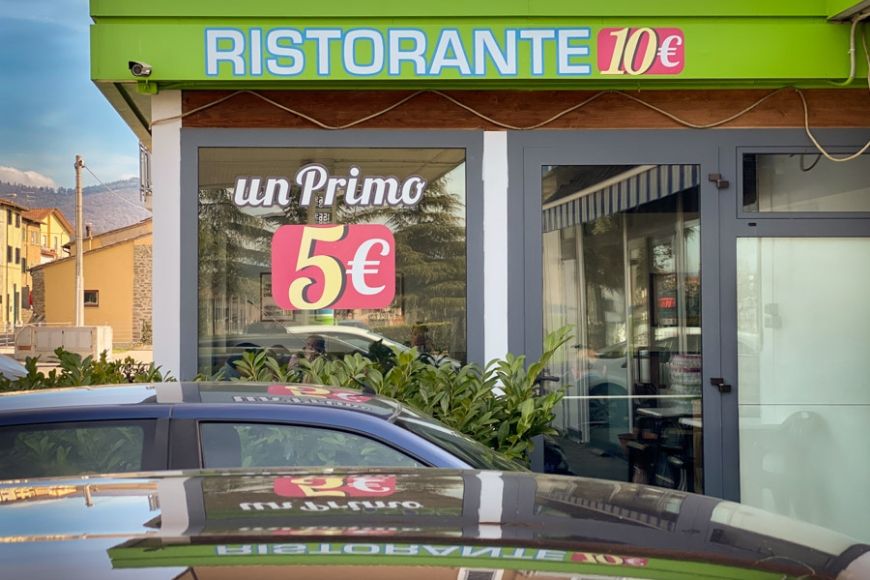
Living in a small village in the country has introduced me to one of my favorite types of Italian meals: the workers’ lunch. Gas stations, farm stands, and little restaurants are common venues for workers’ lunch menus. You’ll know you’re in the right place when you spot the muddy boots of field workers, and truck drivers, repair men, and others taking a well-earned break in the middle of the workday. The same people tend to eat at the same place every day so the menu, rather than the clientele, changes daily.
The meal includes a choice between two or three different types of pastas or soups followed by different choices of meats, vegetables, and potatoes; and then coffee. Bottled water and house wine are usually included, and usually the total is between 10 and 12 euros per person. Even though these places cater to workers, the pace is still leisurely with no one hurrying through their lunches.
The right temperature for wine
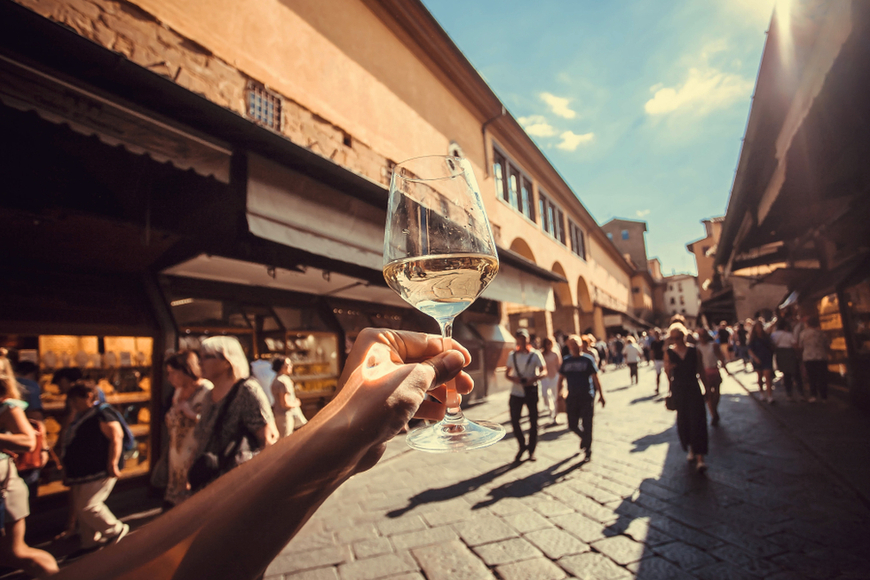
Federico Piva, head waiter and wine guru at Castello di Ama near Siena, shared his favorite tips for enjoying Italian wine. He serves some of the finest Italian wines in the world at Il Ristoro di Ama, and said customers are sometimes surprised that the reds are served cooler and the whites a bit warmer than what people are accustomed to.
Each wine has an optimal temperature for drinking, says Piva, and is delivered to the table at that temperature. The perfect temperature is determined by the rate at which the tannins oxidize, and rushing a wine by letting it warm too soon has a big effect on the balance and flavor. So if you want to taste a wine at its best, follow the lead of an expert when they are serving you.
Be bold
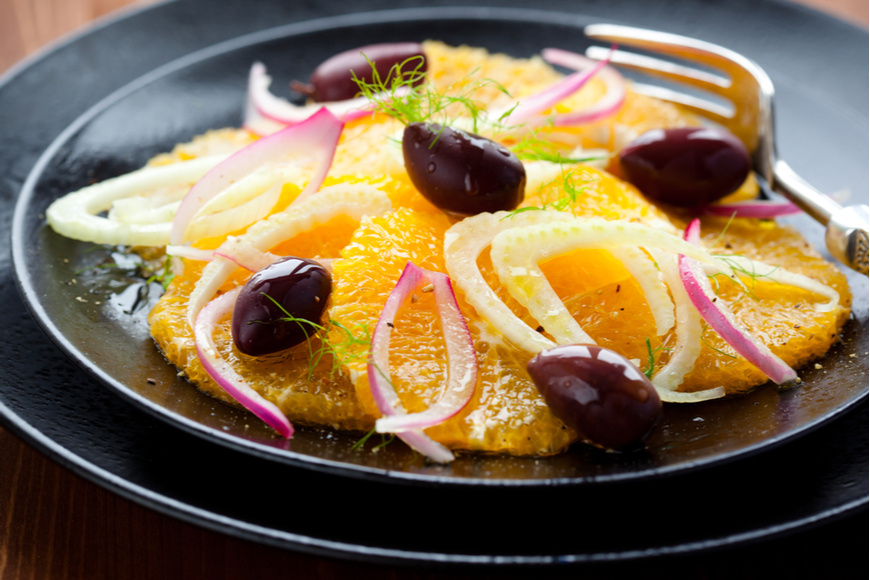
See something on a menu you don’t recognize or haven’t tried before? Be bold and try it. Tuscany has a range of signature dishes that aren’t well-known outside the region, often because the ingredients are so geographically specific that they’re hard to replicate elsewhere.
For instance, while in Tuscany you may see wild boar, or cinghiale, on a country road late at night … and frequently on menus. It’s not gamey, and is a local favorite for a reason. It’s often served in a ragu, but also shows up as sausages, salami, and grilled.
Tuscans love bitter flavors and you will often see bitter greens in salads or used in vegetable dishes. They provide a nice counterpoint to a meat dish. And salads always come undressed, with olive oil, vinegar, and salt provided on the side.
A popular Tuscan salad, which can be a bit foreign for many visitors is raw fennel, orange, red onion, often with olives or nuts. Try this refreshing combination even once and you just may find yourself recreating it at home. And keep a sharp lookout for dishes with local mushrooms, unique pastas, and anything with the Tuscan garlic aglione.
More from SmarterTravel:
- Best Shoes to Wear in Europe
- 7 Great Things to Do in Tuscany with Kids
- The Ultimate Checklist for Traveling Abroad
Nancy Raff moved from California to a small village in Tuscany with her family eight years ago, and lives full-time in Italy running her creative agency and sharing Italian adventures, destination advice, and recipes at itch.world. Follow her on Instagram at @itch.world.
We hand-pick everything we recommend and select items through testing and reviews. Some products are sent to us free of charge with no incentive to offer a favorable review. We offer our unbiased opinions and do not accept compensation to review products. All items are in stock and prices are accurate at the time of publication. If you buy something through our links, we may earn a commission.
Related
Top Fares From
Today's Top Travel Deals
Brought to you by ShermansTravel
Shop and Save with Country Inns...
Patricia Magaña
 Hotel & Lodging Deals
Hotel & Lodging Deals
$229 -- Chicago: Discounted Rates and...
Francesca Miele
 Hotel & Lodging Deals
$229+
Hotel & Lodging Deals
$229+
$188 -- Honolulu: Save on Oceanview...
Abigail Lamay
 Hotel & Lodging Deals
$188+
Hotel & Lodging Deals
$188+




